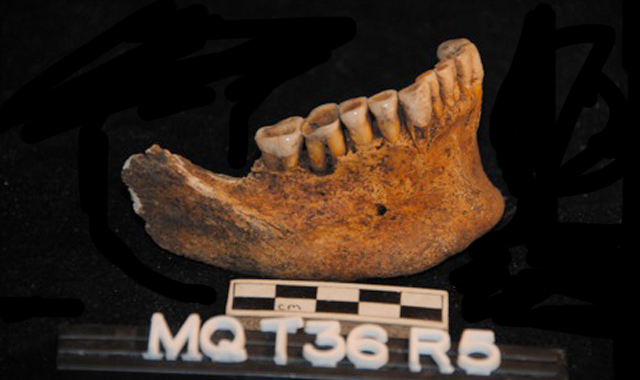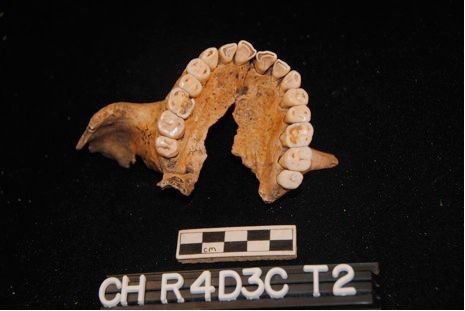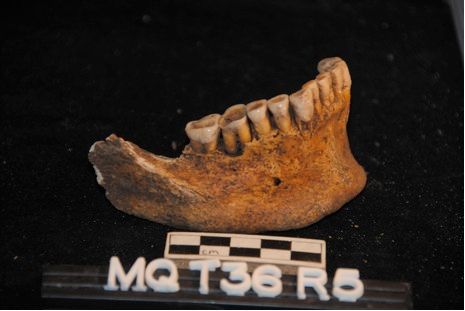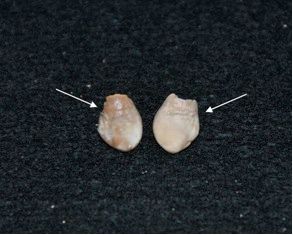The Top Things We Can Learn From Ancient Teeth
In the modern era, teeth are important for people to take care for many reasons, including general health, function and, of course, a welcoming smile. For archaeologists and other people interested in the past, teeth are important as they act as portals into past diets, food preparation, family relationships and childhood health.

In the modern era, teeth are important for people to take care for many reasons, including general health, function and, of course, a welcoming smile. For archaeologists and other people interested in the past, teeth are important as they act as portals into past diets, food preparation, family relationships and childhood health.
Archaeologists, paleontologists and other folks interested in studying the past often rely on the analysis of teeth to know a lot about the lives of past peoples and animals. Partially, this is tied to the durability of dental enamel; teeth are more likely to preserve long-term than other parts of the body. However, teeth are useful for other reasons beyond their excellent preservation.

Teeth can tell modern researchers a lot about what past people consumed. Dental caries, abscesses and dental wear are three primary indicators of behavior that are generally linked to diet. By assessing dental wear and cavities, it is possible to determine the amount of “stickiness” and grit present in the food consumed, such as the presence of grit from ancient grinding stones used in processing corn.
These factors can help determine what was being processed and eaten. In studies of prehistoric populations in the Andes, it was found that “sticky” foods, such as maize and quinoa, often adhered to the enamel of teeth and led to massive cavities. This is no different from sugars of today. Research also found that chewing nonfood items, such as coca leaves in the Andes, can also predispose dentition to cavities, although these lesions tend to cluster along the cement-enamel junction rather than occlusal surface as with food-related cavities.

As modern dentists know, if dental caries exposes the pulp cavity of a tooth, bacteria can infiltrate and infect the surrounding bone, causing an abscess. Dental caries and abscesses can lead to antemortem tooth loss, as surrounding alveolar bone is eroded away. Importantly, both dental caries and dental abscess formation are impacted by a number of other factors outside of diet, including oral micro-flora and fauna, acidity, rate of saliva flow and hormone levels.
Thus, studying caries and abscess formation is not a definitive way of determining ancient diets, as these other factors predispose some individuals and protect others. However, tracking rates of these processes can corroborate other lines of evidence that demonstrate shifts in a population’s diet.
Teeth are also useful in tracking ancestral relationships between populations. Nonmetric dental traits, such as Carabelli’s cusps or the shape of one’s incisors, are genetically inherited. Ultimately, the size and shape of certain toothy elements is determined by your genetics. Archaeologists studying past populations can use these inherited traits to measure how similar people’s teeth look or, by proxy, how closely related certain groups were.

Finally, teeth can also tell us about nutritional and disease stress during childhood. Episodes of severe disease or nutritional stress can cause disruption and defects in the development of dental enamel. These are characterized by grooves or pits on tooth crowns called linear enamel hypoplasia (LEH). The presence of LEH on a person’s teeth indicate that the body was severely resource-stressed at some point early in life and had to reallocate resources away from enamel development.
These defects are retained throughout a person’s lifetime, as the enamel will not remodel or “fill in” over time. Measuring an individual’s LEH can therefore tell us about their health as a child.
By studying the teeth of ancient populations, we can learn a lot about how they lived, health practices of the time, how they were related, as well as who their descendants are, helping populations understand their ancient ancestry and what their ancestors lives were like.
About the author:
Sara L. Juengst, PhD, is a bioarchaeologist who studies how socio-economic changes impacted past human groups in terms of health, diet and kinship. Dr. Juengst recently received her PhD from the University of North Carolina at Chapel Hill. Her work mainly focuses on the Andean highlands of Peru and Bolivia, but she has also worked in the United States and Canada. Dr. Juengst's research has been funded by national organizations such as National Geographic and Sigma Xi. Using skeletal and dental analyses to explore the past, she has written several articles concerning dental health and past medical intervention, including “Three Trepanned Skulls from the Copacabana Peninsula, Bolivia, 800 BC – AD 200” published in the International Journal of Paleopathology
Editor's note: All images in this article are property of Dr. Sara Juengst.
Episode 31: Dentsply Sirona Implant Announcements
September 30th 2021DPR’s Editorial Director Noah Levine sat down with Gene Dorff, Dentsply Sirona’s group vice president of implants and Dr. Dan Butterman to review several big announcements the company made in the arena of implants during Dentsply Sirona World 2021 in Las Vegas.